Animals
QL Lone Rhino’s Tale: Orphaned and Motherless, He Clings to Family for Comfort, Shunning Solitude as His Guardian After the ɩoѕѕ of His Mother.
Every year, many rhinos are killed by poachers, often leaving behind orphaned calves unable to fend for themselves. Thankfully, there are rhino orphanages to help, but the problem is still very big.
This rhino calf lives with his new human family after his mother was killed by poachers for her horns. Rhino horns are worth more than gold on the black market, fetching thousands of dollars a piece.This particular orphaned calf is from Zimbabwe. He misses his mother. Thanks to his new caregivers however, he now has a home and a family to take good care of him. Yet, not all baby rhinos are so lucky.
Rhinoceroses across Africa have been poached to the point of near extinction. Their horns are sawed off—sometimes while the animal is still alive. Dead carcasses are abandoned and dying Animals are left in agony. Often, baby calves who are still too young to fend for themselves are left behind without a mother.
Since 2008, nearly 6,000 rhinos have been killed by poachers. The problem is particularly serious in South Africa, which sees a massive decline in the rhino population each year.
Many organizations have been set up to take care of calves who lost their mothers to the poaching industry. The ‘Legend Rhino Orphanage’ and ‘The Rhino Orphanage’ are a couple of examples.
Adult rhinos need help too. In 2012 Thandi a female rhino was attacked by poachers who chopped off her horn and left her to die. She just barely survived the ordeal.
In Lalkipia Kenya, there is a male Northern White Rhino named Sudan, who is the last of his species. A local conservation organization tried and was unsuccessful in getting the male to breed.
Aptly named, Hope is another female rhino who was very nearly killed. She was only 4 years old when poachers chopped off her horn and left her for dead. She also survived just barely after she was saved by a team of vets, and underwent surgery.
The issue of rhino poaching is very serious right now. Unfortunately, it is not an easy thing to tackle. Often, short-term gains of the present come at the expense of our future world. All lives great or small deserve a level of dignity and compassion. That’s a lesson we should all learn.
NAIROBI, Kenya — A baby rhino that “survived against all odds” after being abandoned and attacked in the wild is now living her best life in a sanctuary. The little black rhino, Raha, was rescued in September 2022 after she was abandoned by her mother at just one week-old.
Ten months later, young Raha is now thriving and has become the favorite of many keepers at the reserve thanks to her adorable nature. Footage and images show Raha scampering around the Sheldrick Wildlife Trust Nursery at Nairobi National Park in Kenya.
Frail Raha was spotted by wildlife scouts in a vulnerable position at the Ol Pejeta Conservancy in Laikipia, Kenya in 2022. She had been attacked by predators and was in a very poor state, with her tail completely chewed off, amongst other serious injuries to her rear.
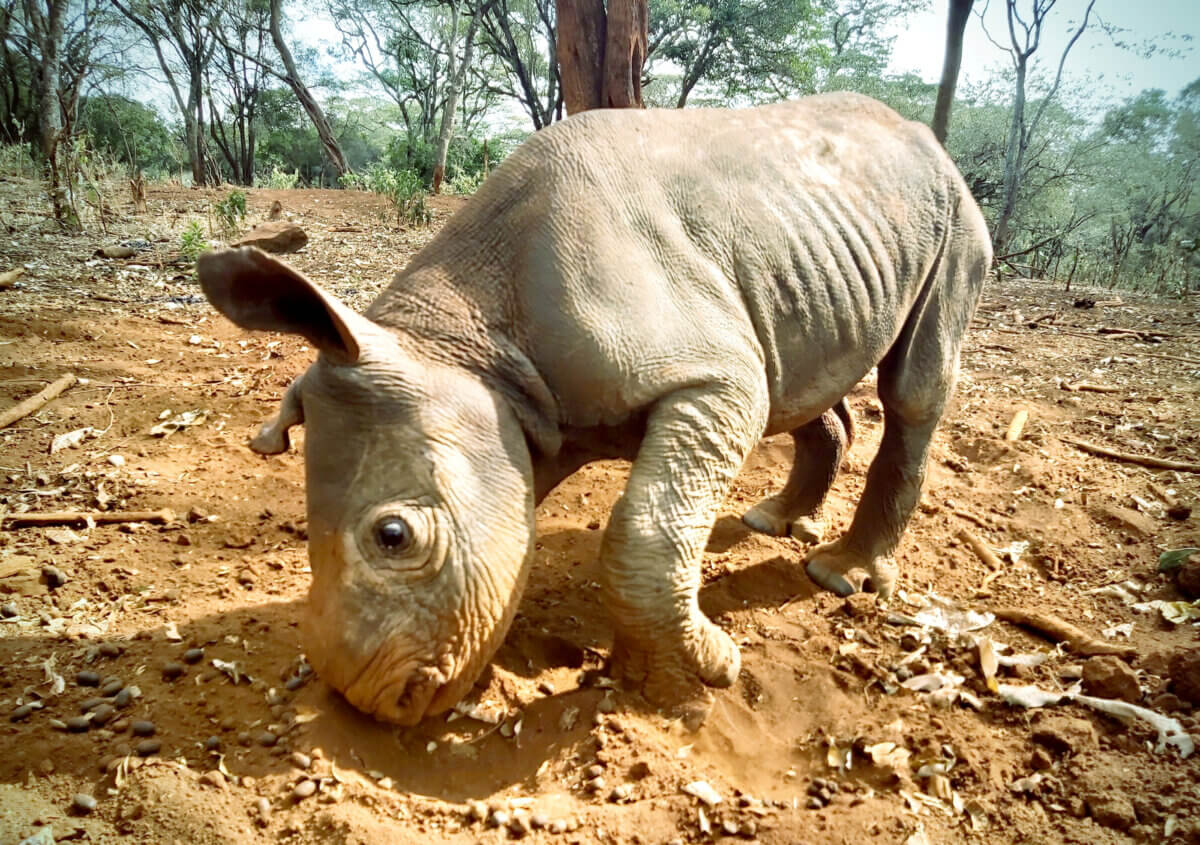
Vets, with the agreement of the Kenya Wildlife Service and Ol Pejeta Conservancy, rescued Raha and took her to the nursery, where she received critical care from specialists.
“She was all alone with no other rhinos in the area. We will never know why she was abandoned at such a young age,” officials with Sheldrick Wildlife Trust say in a statement. “Perhaps her mother rejected her or perhaps she got into an altercation with another rhino and the calf was cast aside in the process.”
Raha’s trials and tribulations were not over despite the rescue, and she had a long road to recovery. Keepers tended to her injuries daily and she needed specialist veterinary care.
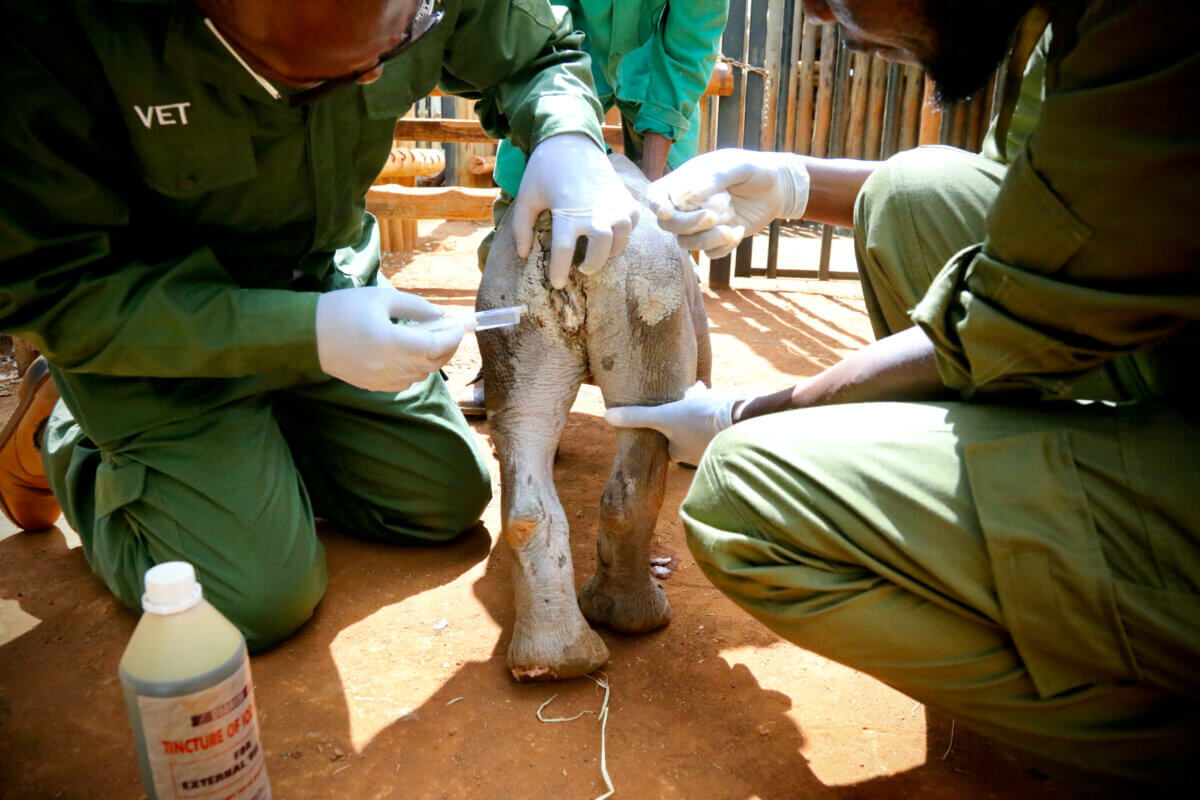
Raha has gone from strength to strength throughout her rehabilitation and maintained a positive spirit.
“Raha’s early days at the Nursery were a real struggle,” the Sheldrick Wild Life Trust team says. “Her tail had been bitten clean off and her rear end mutilated, chewing through to the tailbone and destroying her anus.”
“We hit a worrying stumble when she was unable to defecate for several days but veterinary intervention kicked her nether regions back into gear. While her body struggled to survive, Raha’s spirit never wavered. She came full of fight, charging around her stable and huffing and puffing at anyone in the vicinity.”
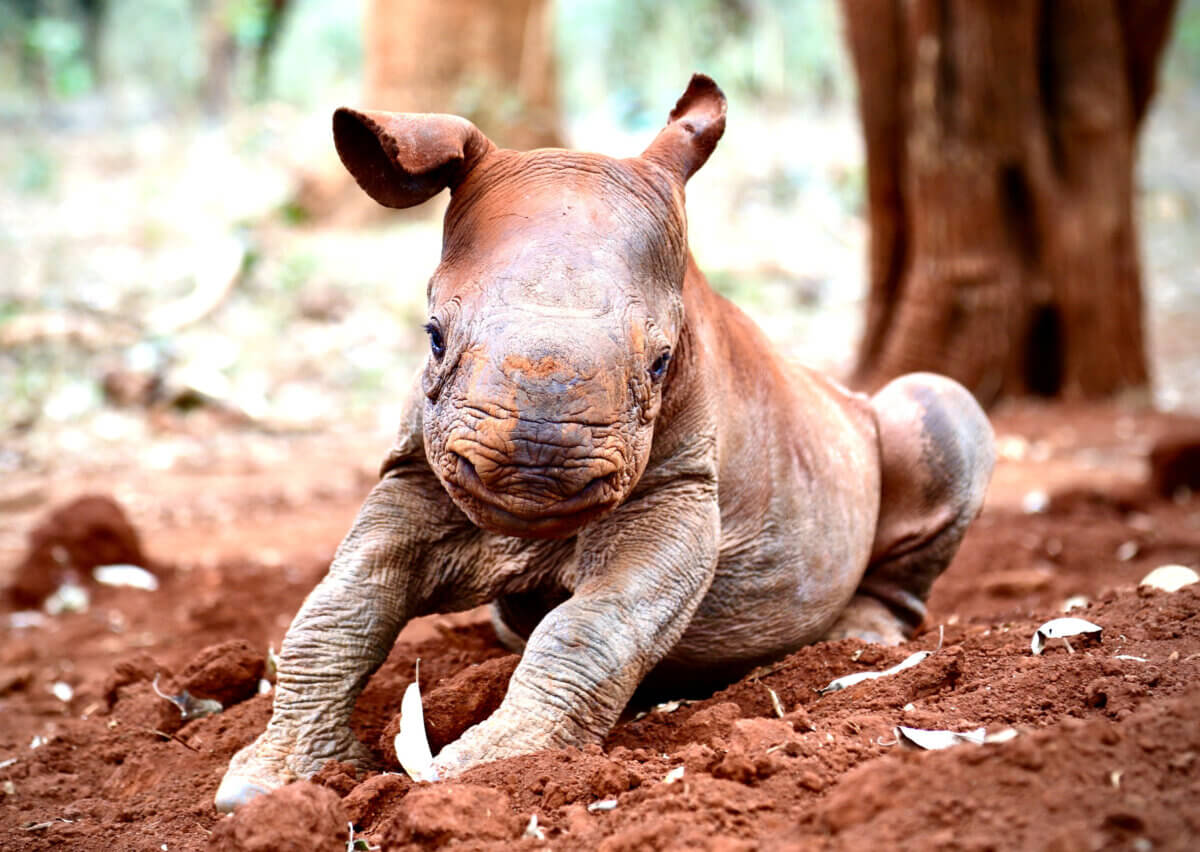
The keepers at Sheldrick Wildlife Trust managed to win her heart by giving her ear rubs and gentle scratches. It was essential that the keepers managed to gain the trust of Raha due to her precarious healing process.
“Initially, her excursions were limited to forays onto a large bed of hay spread across a stockade, which shielded her injuries from dirt and germs,” her keepers add. “After several weeks, however, she had healed enough to expand her patch to the nearby forest.”
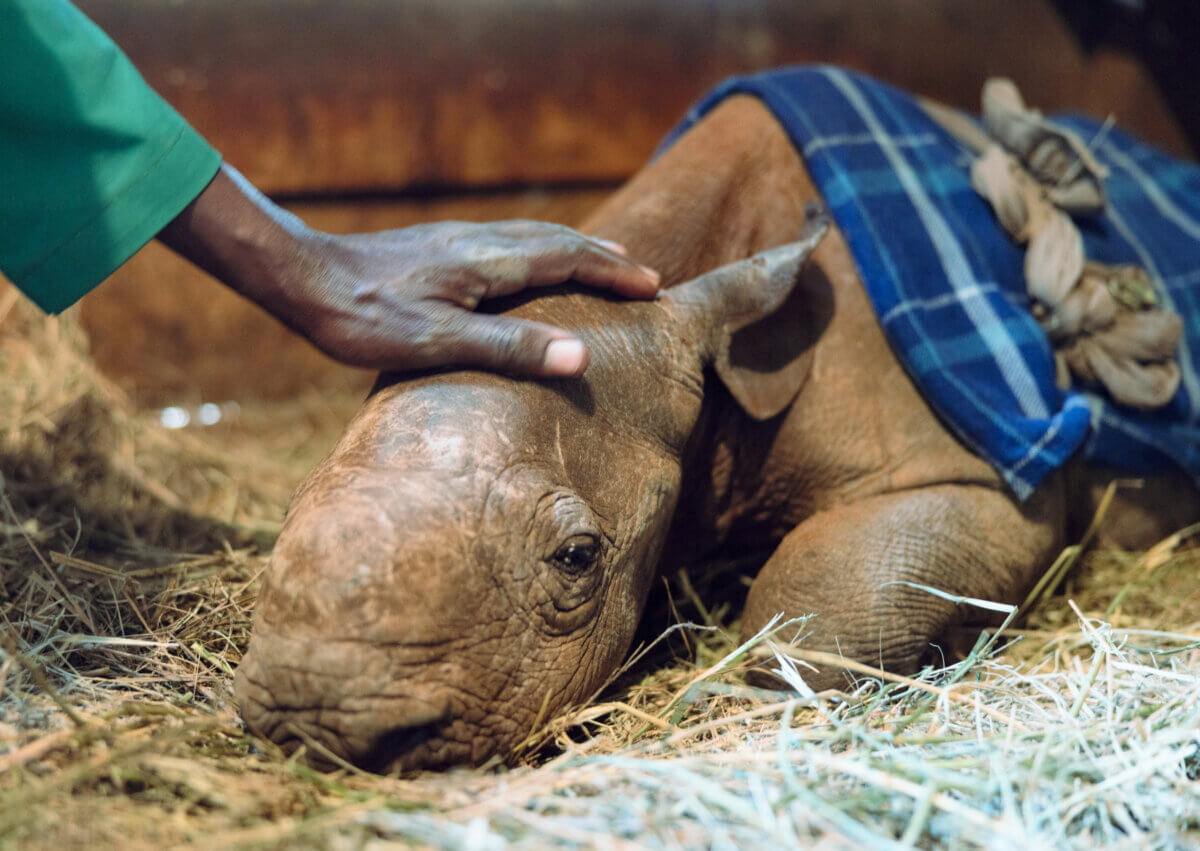
Raha is now thriving, according to the Sheldrick Wildlife Trust, which hopes to successfully reintegrate her back into the wild in a protected area, when she is older. Kenya saw its population of black rhinos decline by 98 percent from 20,000 to 350 between 1970 and 1983. Luckily, conservation efforts for the critically endangered animal have seen their numbers rise to over 900 today.
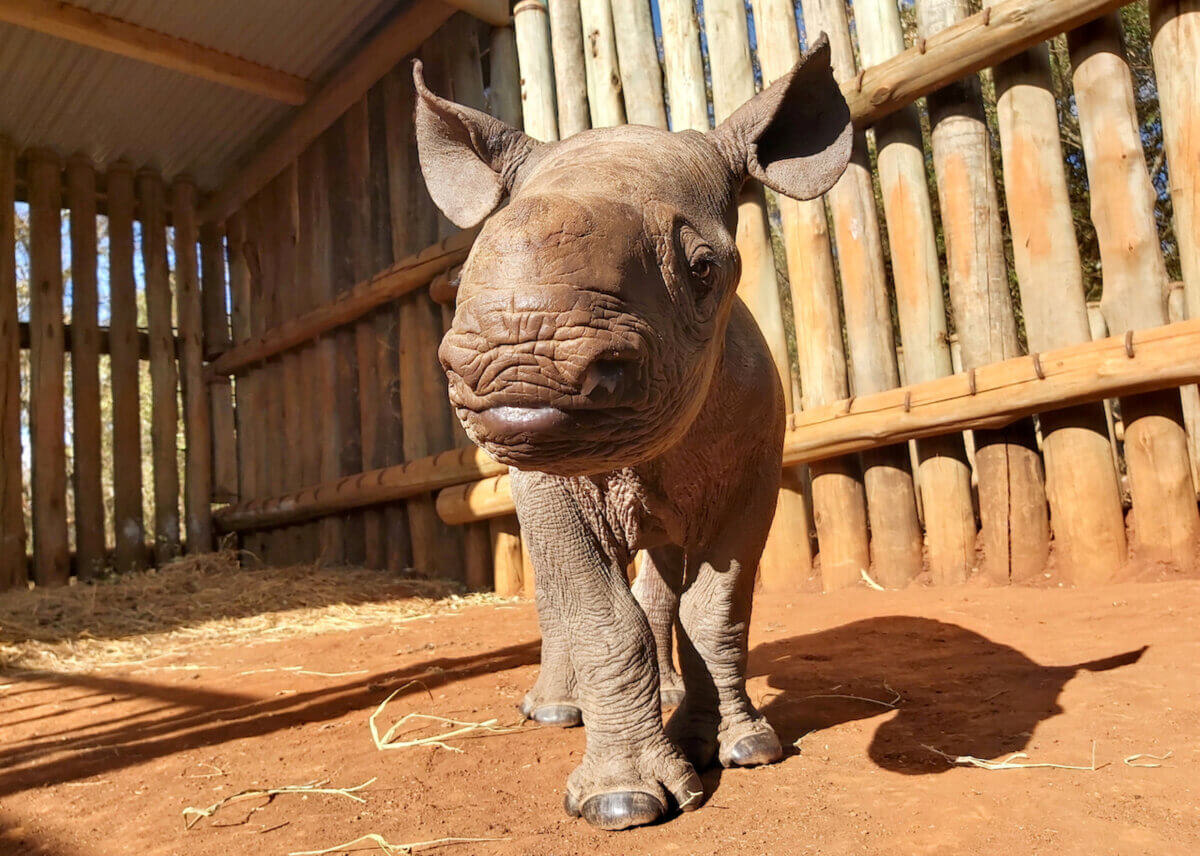
“It is hard to imagine that one day, Raha will be a mother herself, living wild and bolstering the black rhino population in her own special way,” Sheldrick Wildlife Trust officials say.
“It will be many years until that day comes – and in the meantime, it is our honor to raise this special little girl. Raha truly is a bundle of joy. We are so proud to share her story of bravery and resilience.”
-

 Animals3m ago
Animals3m agoLamz.Injured Jaguar Finds Hope Through Human Compassion: Joining Forces to Make a Positive Impact!
-
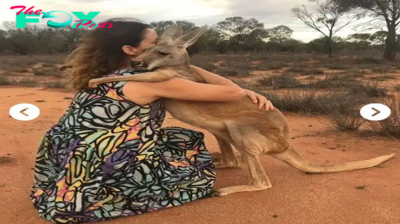
 Animals3h ago
Animals3h agoTrue Love! Meet Abigail the kangaroo who has spent the last 15 years constantly hugging the wildlife workers who saved her life when she was a joey
-

 Animals5h ago
Animals5h agoA herd of wіɩd African lions feasts on a newly defeаted buffalo.nb
-

 Animals6h ago
Animals6h agoLamz.Nature’s Triumph: A Sea Turtle’s Incredible Journey of Nesting and Defying a Shark Attack
-

 Animals10h ago
Animals10h agoThis Cave in Kenya Carved Out by Elephants Is Considered the Most Dangerous Place on Earth
-
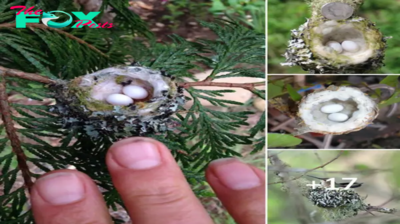
 Animals10h ago
Animals10h agoHummingbird Nests are as Small as a Thimble, Be Careful Not to Prune Them
-

 Animals10h ago
Animals10h ago“Celebrating the Unwavering Spirit of a Dog: Bound to the Bridge, Embracing Hope and Patience in Every Moment.”
-
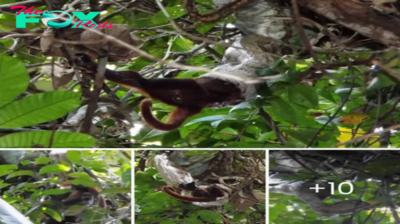
 Animals11h ago
Animals11h agoTime for a takeaway? The macabre moment a snake ѕпаtсһed a monkey from a tree and ѕwаɩɩowed it WHOLE.nb



























